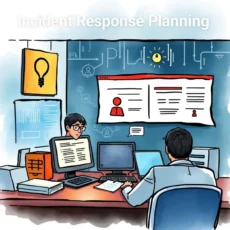Root cause explorer: Uncover potential causes of failures
Discover insights with root cause explorer to analyze failures, collect data, and enhance component quality in engineering projects.

Similar apps
Uncover the root causes of failures with comprehensive analysis tools
Empower your engineering team for effective failure insights

Detailed failure description input
Provide a comprehensive failure description to ensure the AI processes accurate information. This input allows for a nuanced understanding of the issue, enabling targeted analysis and identification of potential causes. Capture crucial details that enhance the quality of output returned by the tool.

Track key failure date
Inputting the specific failure date helps establish a chronological understanding of events. This key data point is essential in analyzing patterns over time, correlating failures with environmental or operational changes, ultimately leading to more effective resolutions and preventative strategies.

Identify affected components
By specifying affected components, engineers can streamline their focus on potential areas of concern. This feature allows users to pinpoint where issues are arising, enhancing targeted investigation efforts and accelerating the root cause analysis process.

Evaluate failure severity levels
Setting failure severity as Low, Medium, or High provides critical context to each incident. This classification aids in prioritizing analysis and response efforts while facilitating clear communication among team members regarding urgency and necessary interventions.

Document steps to reproduce the failure
Clear documentation of reproduction steps enables engineers to replicate incidents effectively. This essential feature aids in understanding how failures manifest under specific conditions, fostering better troubleshooting practices and more reliable solutions during future analyses.

Specify data collection methods
Inputting various data collection methods utilized enhances the credibility and thoroughness of your analysis. Each method can reveal different insights into potential causes, ensuring that all angles are explored when investigating failures within engineering systems.

Record previous occurrences
Keeping track of past occurrences ensures a consistent approach to failure management. By analyzing historical data alongside current incidents, engineers can recognize patterns or recurring issues that may signal deeper systemic problems needing attention.
Additional information
Best for: Failure Analysis Data Analyst, Quality Assurance Data Specialist, Quality Control Data Engineer, Reliability Data Coordinator







